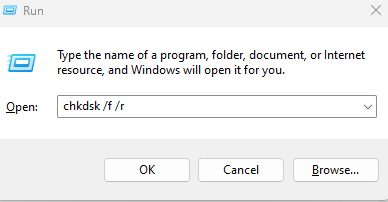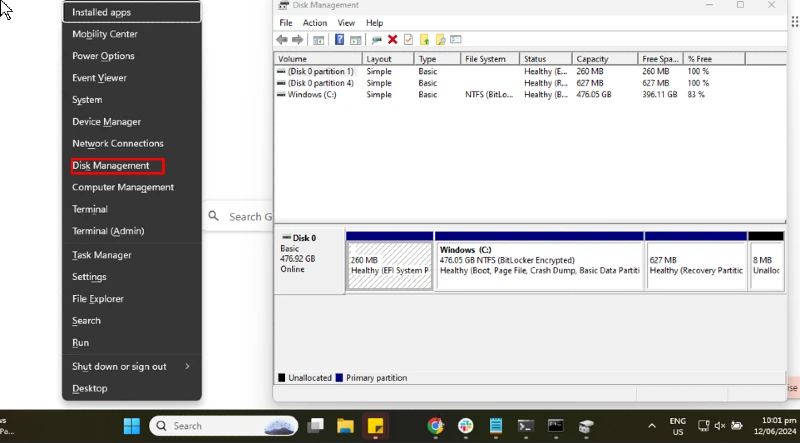Unable to complete the format is a frustrating error many Windows users encounter when trying to format a drive or storage device. Whether you are attempting to prepare a new hard drive, reformat an existing one, or troubleshoot issues with a USB stick, this error can halt your progress and leave you searching for solutions.
We will look at the common causes of the “unable to complete the format” error and provide step-by-step instructions to help you resolve it. From checking for hardware issues to using advanced Windows utilities, you’ll find practical tips to get your drives formatted and back in working order.
Causes of Windows Unable to Complete Format Error

- Disk Write Protection: The drive might be write-protected, preventing any changes.
- Bad Sectors: Damaged or bad sectors on the disk can cause formatting failures.
- File System Errors: Corrupted file systems can hinder the formatting process.
- Drive Corruption: The drive itself may be corrupted or physically damaged.
- Virus or Malware: Malicious software can interfere with disk operations.
- Driver Issues: Outdated or faulty drivers may cause the error.
- Insufficient Power Supply: Power issues can disrupt the formatting process.
- Incompatible File System: The chosen file system might not be supported by the device or Windows.
- Software Conflicts: Conflicting programs or background processes can impede formatting.
- Improperly Connected Drive: Loose or faulty connections can prevent successful formatting.
How to Fix Unable to Complete the Format Error on Windows
Scan and Repair Bad Sectors
Bad sectors on your drive can prevent the formatting process from completing.
To scan and repair these sectors:
Open Command Prompt: Press Win + R”

Run CHKDSK: Type chkdsk X: /f /r (replace “X” with your drive letter) and press Enter. This command will check and fix any bad sectors on the drive.
Format Your Drive Using Command Prompt
Using Command Prompt can often bypass issues that prevent formatting through the standard Windows interface:
Open Command Prompt as Administrator: Press Win + X and select “Command Prompt (Admin).”
or Start button > type command prompt > Run as Administrator
Enter Diskpart: Type diskpart and press Enter.

List the Disks: Type list disk and press Enter to see all connected drives.
Select Your Drive: Type select disk X (replace “X” with your drive number) and press Enter.
Clean the Drive: Type clean and press Enter to remove all partitions.
Create a New Partition: Type create partition primary and press Enter.
Format the Drive: Type format fs=ntfs quick (or format fs=fat32 quick for FAT32) and press Enter.
Assign a Drive Letter: Type assign letter=X (replace “X” with your desired drive letter) and press Enter.
Use Disk Management to Complete the Format
Disk Management provides a graphical interface for managing your drives:
Open Disk Management: Press Win + X and select “Disk Management.”

Locate Your Drive: Right-click on the drive you want to format and choose “Format.”
Set Format Options: Choose the file system (NTFS or FAT32), set the Allocation unit size to Default, and check the “Perform a quick format” option.
Complete the Format: Click “OK” to start the formatting process.
Remove Write Protection
Write protection can prevent formatting. To remove it:
Open Command Prompt as Administrator: Press Win + X and select “Command Prompt (Admin).”
Enter Diskpart: Type diskpart and press Enter.
List the Disks: Type list disk and press Enter to see all connected drives.
Select Your Drive: Type select disk X (replace “X” with your drive number) and press Enter.
Clear Write Protection: Type attributes disk clear readonly and press Enter.
Use a Third-Party Tool to Complete the Format
If built-in Windows tools fail to complete the format process, consider using a third-party disk management utility. These tools are more robust and can handle complex formatting issues that Windows may need help with. One such utility is Tweaking, which can seamlessly fix the “Unable to Complete the Format” error on Windows.

Tweaking’s advanced disk scanning detects and repairs bad sectors, often causing formatting failures. It also repairs corrupted system files and folders, ensuring programs run smoothly after formatting. It keeps essential components like Defender and Firewall running while repairing virus and malware damage.
Tweaking can resolve formatting issues, optimize your system, and maintain security, ensuring a smooth computing experience.
Download and Install Tweaking now.
Conclusion
By following these steps, you can effectively resolve the “unable to complete the format” error on Windows. Whether repairing bad sectors, using Command Prompt, Disk Management, or removing write protection, these methods will help you get your drive formatted and ready for use.
Always back up important data before performing any disk operations to avoid loss.
Menzi Sumile
Verified at:
29/05/2024 06:37
Leave a Reply